Is Your Soil Healthy?
Soil health is defined as the continued capacity of soil to function as a vital living ecosystem that sustains plants, animals, and humans. Soil is composed of minerals, organic matter, water, air, and billions of bacteria, fungi, and other microbes. A balance of these components dramatically improves soil health and garden productivity.
Roughly 45% of the soil content consists of small bits of weathered rock that has been broken down into minerals essential for plant growth.
Organic matter is partially-decomposed remains of soil organisms and plant life. Adding compost will improve almost any soil by binding together soil particles into porous crumbs which allow air, water, and roots to move more easily through the soil.
Organic matter also retains moisture, absorbs and stores nutrients, and is food for microbes and other life forms in the soil. Soil should be 5-10 % organic matter. We always encourage the use of bark mulch in planting beds, not only to insulate the soil in extreme heat and cold, reduce water loss through evaporation, and deter weeds, but also because bark breaks down slowly, enriching the soil as organic matter.
Healthy soil is 25% water. Water is held in pore spaces between soil particles. Large pore spaces allow rain and irrigation to move down to the root zone and into the subsoil. In soil with small pore spaces, water drains very slowly and these soils tend to be hard, and crack when dry.
Another 25% of a robust soil is air. Well-aerated soil has plenty of pore space between the soil particles. Just like humans, plants, worms, and other soil life needs air. Plants need air above ground for photosynthesis, and in the soil, air is an important source of the atmospheric nitrogen used by the plants. Good soil provides just the right space between its particles. Adding organic matter helps balance the air supply. Avoid working the soil when it’s wet, using heavy equipment that can compact the soil, or stepping in planting beds when possible.
A healthy organism population is essential to healthy soil. Soil organisms include earthworms, nematodes, springtails, bacteria, fungi, protozoa, and many others. These organisms help convert organic matter and minerals into the vitamins, hormones, disease-suppressing compounds, and nutrients that plants need to grow.
Most soil is less than perfect- too much clay, too acidic, too compacted, too salty, etc. Garden plants will eventually show their unhappiness by displaying stunted growth or off-color leaves. A soil test will provide a wealth of information about your soil. Soil tests usually rate the levels of soil pH, phosphorus, potassium, magnesium, and calcium. Some labs also offer tests for micronutrients that may be helpful if you think the soil may not be providing enough nutrients for robust plant growth and health. Click this link to purchase a home lawn and garden soil test kit. https://homesoiltest.msu.edu/
The kit includes a self-mailer with everything you need. Simply place one cup of soil in the plastic bag provided, and mail it back in the postage-paid envelope. Within two weeks, you will receive an e-mail with your results and a custom fertilization program to meet your plants needs.
In addition to finding the soils nutrient content and mineral levels, it is important to identify the soil type. By conducting a simple soil test in a mason jar, you can see what type of soil you have. The three predominant components are sand, silt, and clay. The portions of sand, silt, and clay affect drainage and nutrient availability.
Sandy soil consists of small particles of weathered rock, and is the poorest type of soil for thriving plants. Water runs through sandy soil very quickly, taking the nutrients with it.
Silt soil is made up of rock and other mineral particles that are smaller than sand, but larger than clay. Silt is easily transported by moving water, and is mostly found near bodies of water, such as rivers and lakes. Silt is more fertile than sand and clay.
Clay soil has the smallest particles that are tightly packed together with little to no air space. Clay is very sticky and heavy when wet. This type of soil does not drain well, or provide an environment for plant roots to flourish.
Loamy soil is a combination of almost equal parts sand, silt, and clay. This is an ideal soil for plants with the beneficial properties from all three. Loamy soil tends to be soft and crumbly when dry, and sticky and moldable when moist. It is a soil that retains moisture and nutrients, but also drains well.
Click the following link for instructions on how to perform a mason jar soil test, and how to amend the soil for your soil type to create the ideal loam soil. https://www.gardeningknowhow.com/garden-how-to/soil-fertilizers/soil-texture-jar-test.htm

